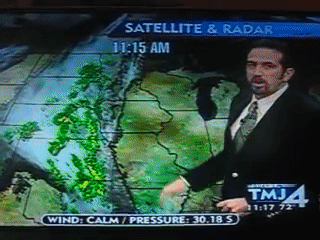Music is one of the most important parts of a video, and is often even more responsible for driving emotional responses than the action on screen. If you don’t believe me, consider this famous scene from Alfred Hitchcock’s Psycho:
The version with the original score is guaranteed to give you the shivers, while the other is just a grainy, 56-year-old, black-and-white scary movie that used Bosco chocolate sauce for blood. When you take away the soundtrack, the fear evoked in this classic scene suddenly becomes less disturbing.
In fact, according to IMDb, Hitchcock originally wanted the scene to be silent, but upon hearing the proposed score, he doubled the composer’s salary, and ended up using a third of the film’s budget on music.
A good, compelling video that pairs great content with the right soundtrack is one of your best tools for driving conversions. According to Unbounce, when you include a video in your landing page, you stand to increase conversions by 80 percent. The right music will only help drive your video’s success.
Find the right emotions to enhance your video marketing strategy
Just as Hitchcock used a shrill violin motif to forever ruin showers for me, marketers can choose from a range of dynamic music and sound effects to influence how their audiences react to their video marketing content.
Whether you are creating a video as a testimonial, product demo, advertisement or blog content, or just to feature your office culture, you’ll need to consider your video’s intended pace, mood and intensity.
Re-read your script or watch the music-free version to get a sense of what your video should be communicating. More importantly, identify what it lacks without a soundtrack. Are you aiming for your viewers to feel:
Excited that your innovative brand is pushing the boundaries of technology, and helping your customers to do better business with the cloud?
A buzzing, shimmering soundtrack might work best. An electronic beat will emphasize “tech,” and a quick tempo will usually suggest forward-thinking and progress. Take a listen to this sample track (and please ignore the stock-site audio watermarks) to get a sense of what this might sound like:
Inspired by a convincing testimonial about how great your company is to work with?
A slightly gentler piece with warmer tones will help to convey positivity and trust. Look for music featuring a major key performed with real acoustic, analog instruments, like this:
Relaxed and comforted that your office culture seems honest and causal?
Time to bust out the harmonicas. Or banjos. Or tubas. Whatever instruments you end up using, remember that the more light-hearted the music sounds, the better you can show how you are approachable and real. For example:
Structure & mechanics: Making music & visuals work together
You’ve narrowed your music choices down to the right genre and now you’re just looking for the perfect song. Whether you’re browsing through a stock music website for an affordable piece, buying a license to use a popular song, commissioning work privately or even trying your own hand at scoring the video, there are several musical and technical factors to look out for.
Background music belongs in the background
The soundtrack is meant to complement the script and visuals of the video, not draw attention away from it. A complex, dynamic song might be what you listen to on your iPod, but it detracts attention when coupled with a marketing video.
Your music should serve as the bed for the on-screen action. Keep it dynamically flat. Avoid drastic buildups or other sudden volume, intensity and instrument changes. These might clash with the narrator’s voice or imply thematic changes in the video that don’t match with the visuals.
Pop and rock songs more or less follow a similar form: intro, verse, chorus, verse, chorus, bridge, chorus, chorus. You’re probably not shooting a music video, so this traditional form likely won’t work. According to Wista, “the changes and cues of a pop song will not match the flow of your video.” The swells, crescendos and section changes of traditional-form pop songs won’t fit with the natural flow or cuts of the video unless you carefully planned the video to match the song from the start. This could leave your audience confused.
In this video blog, the music sits comfortably in the background. It provides just enough ambience to make the production feel full, but does so without stepping on the host’s toes.
When in doubt, loop your tunes
Many stock music sites have different length loop options for each song. Some stock songs come in full-length verse-chorus forms. They often also have 15-, 30- and 60-second versions, which will repeat one verse or chorus. Don’t fall into the trap of avoiding repetition because you think it would be boring. If a repetitive song comes on the radio, I’ll actually skip it for that very reason because I want something more engaging. However, a looped track that doesn’t need my full attention could work wonders under a video.
If you find a good, but short, section of a song, loop it. The focus in a video is on the action and/or the narration – your audience won’t care that the background music doesn’t follow a traditional pop or rock song form because it serves its purpose well in the background.
We recently filmed an expo for StoneSource. The repeating soundtrack helps to keep the focus on the products by staying uniform and dynamically level.
Use the right instruments
 Instruments and sounds in the mix should not compete with vocals. Much like why a weatherman should never wear a green tie, you’ll need to avoid music with lead vocals in a video with narration or dialogue. Background and choral vocals actually do work in the right setting because they don’t interfere or block out the narration.
Instruments and sounds in the mix should not compete with vocals. Much like why a weatherman should never wear a green tie, you’ll need to avoid music with lead vocals in a video with narration or dialogue. Background and choral vocals actually do work in the right setting because they don’t interfere or block out the narration.
Similarly, avoid whistling, mid-range piano and guitar, certain saxophone and trumpet ranges, and anything else that occupies the frequency range where the voice usually sits.
Steer clear of digital instruments that imitate the sounds of real ones, with the exception of some synthesizers and electronic drum beats. Never use these MIDI sounds to simulate guitar, saxophone or trumpets. MIDI recordings reek of cheapness, quick work and low standards, and everybody – not just the musicians in your audience – will be able to tell.
Splurge on the high-fidelity sound
On the subject of low-quality MIDI instruments, keep in mind that all of your sounds should be of high quality. You don’t need to be an audiophile or trained musician to hear the difference between hi-fi and lo-fi sounds. Your music should be as high-quality as your video, and not sound like you held your phone up to a street performer.
Not only does this video use real instruments, it’s recorded and uploaded with excellent sound quality:
To retain that high-quality playback, use the highest quality files when you’re uploading the final product as well. You might not be able to hear the difference between a compressed .mp3 and the full .wav version, but it will matter when you share the video. Keep in mind, the music will be compressed, and quality will be lost when the video is uploaded. And from there, your users might listen with only one earbud in, or through tiny laptop speakers, or on a poor connection with low-resolution streaming (yes, the “quality” button on YouTube affects audio too). The better quality audio you start with, the better your users will hear it.
Video is one of the best tools you have to market your brand, reach new leads and demonstrate thought leadership. Don’t miss the mark with yours by using mismatched or ineffective music.





